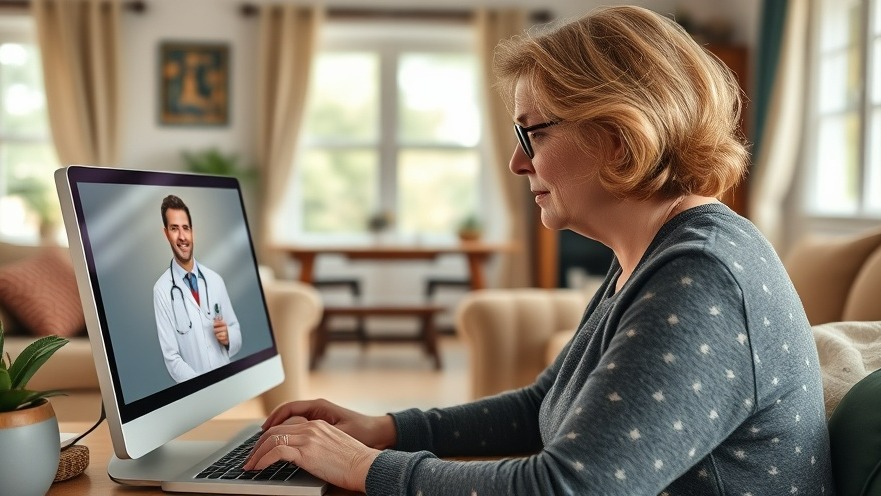
Understanding Rural Healthcare Challenges
Rural America, embodying vibrant communities steeped in tradition and resilience, remains a critical backbone of our country. However, for the one in five Americans residing in these regions, accessing basic healthcare can often feel like climbing a steep hill. Obstacles such as limited hospital options, provider shortages, and economic hardships create barriers to necessary care, transforming what should be straightforward checkups into monumental challenges.
The Multifaceted Strain on Rural Health Systems
When we discuss rural healthcare, the focus often gravitates toward the long distances patients must travel to access services. Yet, the complications reach far beyond mere geography. Recruitment and retention of qualified healthcare professionals are significant hurdles for rural clinics. The Association of American Medical Colleges highlights a looming deficit of up to 86,000 physicians nationwide by 2036, a figure that disproportionately impacts rural areas where resources are already scarce.
The financial strain on these facilities cannot be overlooked either. Many rely heavily on Medicaid funding, which can be critical for their survival. Recent polling indicates that an overwhelming majority—97% of Americans—view Medicaid as essential to supporting community health, with 75% classifying it as vital. Diminished funding can lead to increased hospital closures, heightening the existing crisis. Alarmingly, one-third of rural residents report insufficient hospital facilities, and nearly half sense a scarcity of primary care providers.
Compounding these issues are the social barriers that silently hinder improvements in health outcomes. Education levels, living conditions, and job opportunities contribute significantly. In many cases, individuals in rural communities grapple with unreliable internet access or the financial burden associated with frequent travel to urban centers—even for routine health services. These less visible obstacles critically affect early disease detection and the management of chronic conditions.
Harnessing Technology to Bridge the Healthcare Divide
Despite these pervasive challenges, the landscape is shifting towards a more equitable health delivery system, driven by technological advancements. Telemedicine stands out as a beacon of hope, allowing patients to consult with specialists virtually. This not only enhances convenience but can be transformative for those with chronic illnesses requiring regular monitoring and intervention.
Patients no longer need to endure long drives fraught with stress; the potential for earlier diagnosis and proactive care management is greatly enhanced through remote consultations. This innovative approach can significantly reduce missed appointments and increase routine check-ups, ultimately leading to better long-term health outcomes.
The Role of EHRs in Comprehensive Patient Care
Electronic Health Records (EHRs) have revolutionized how healthcare providers share information. When clinics can effortlessly update a patient’s medical history, lab results, and ongoing treatment plans, it streamlines the process across various healthcare settings. This immediate access to patient data fosters quicker, more accurate decision-making among specialists, enhancing the quality of care provided.
Moreover, the integration of mHealth applications serves as another powerful tool for patients in rural areas. These apps enable users to monitor critical health metrics such as blood pressure and blood sugar levels, facilitating better communication with their healthcare providers. Through telemedicine platforms, patients can manage appointments, communicate with their providers, request prescription refills, and receive tailored health tips—all from the comfort of their homes.
Actionable Insights for Practitioners Navigating This Landscape
For concierge health practitioners, adapting to these technological advancements is key to building and maintaining a thriving practice in rural settings. Embracing telehealth options, integrating usability-focused EHR systems, and adopting mHealth solutions are vital steps towards overcoming barriers to care. This transformation may initially appear daunting, but the long-term benefits include not only enhanced patient satisfaction but also improved workflow efficiency and reduced overhead costs.
Looking Ahead: The Future of Rural Healthcare
As technology continues to evolve, rural healthcare stands at the precipice of unprecedented change. Innovations promise to bridge the gap in access and quality of care. However, the successful implementation of these technologies must be strategic and considerate of the unique challenges faced by rural populations. By recognizing the importance of both financial and social factors, practitioners can better advocate for their communities and leverage technological solutions that genuinely improve care access.
In conclusion, the future of rural healthcare hinges on our collective efforts to innovate and adapt. By utilizing advanced health technologies, we can empower patients, enhance care delivery, and ultimately uplift rural communities. For concierge practitioners, embracing this technological evolution not only secures business growth but also fulfills the noble mission of providing quality healthcare to those who need it most.
 Add Row
Add Row  Add
Add 




Write A Comment